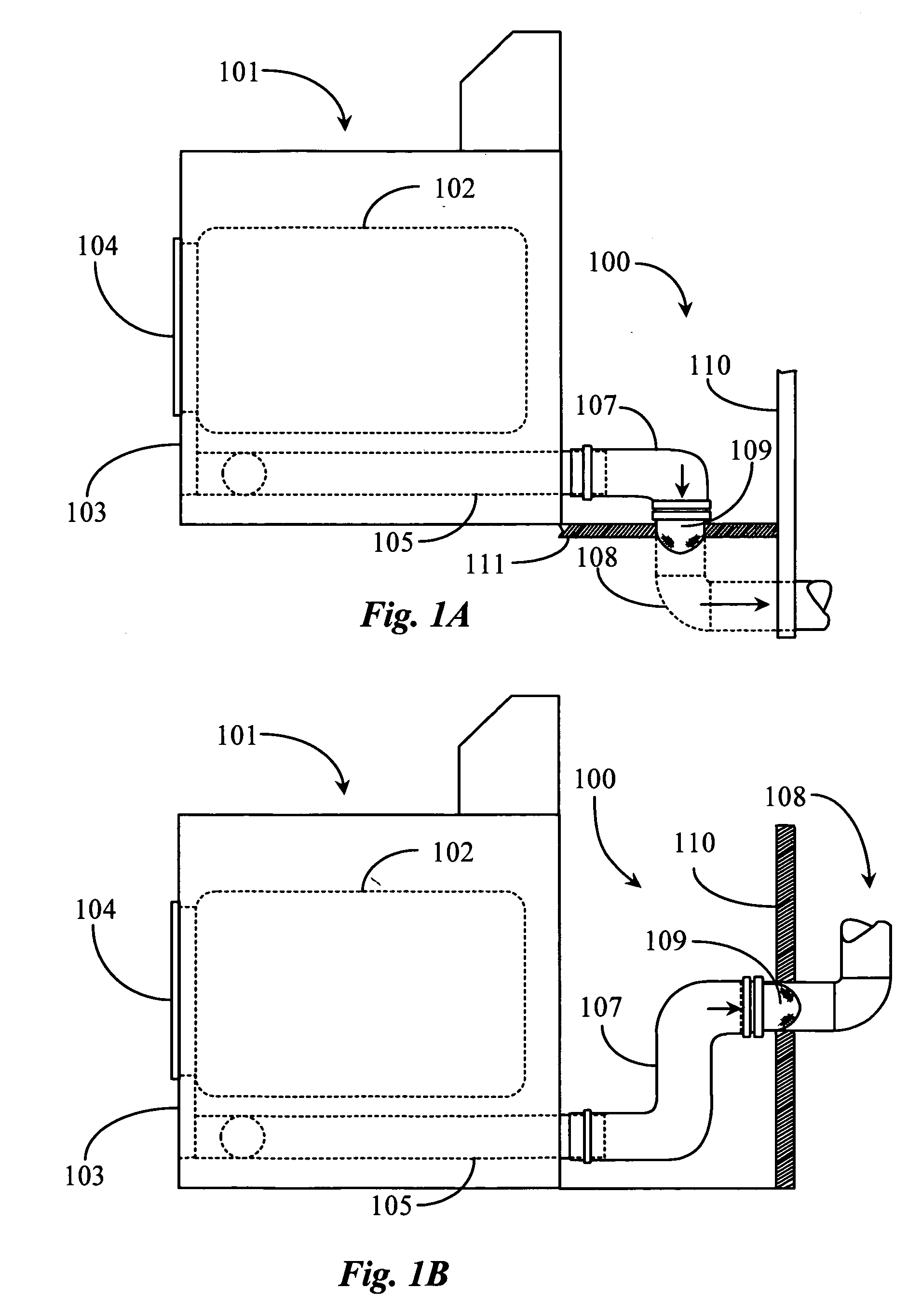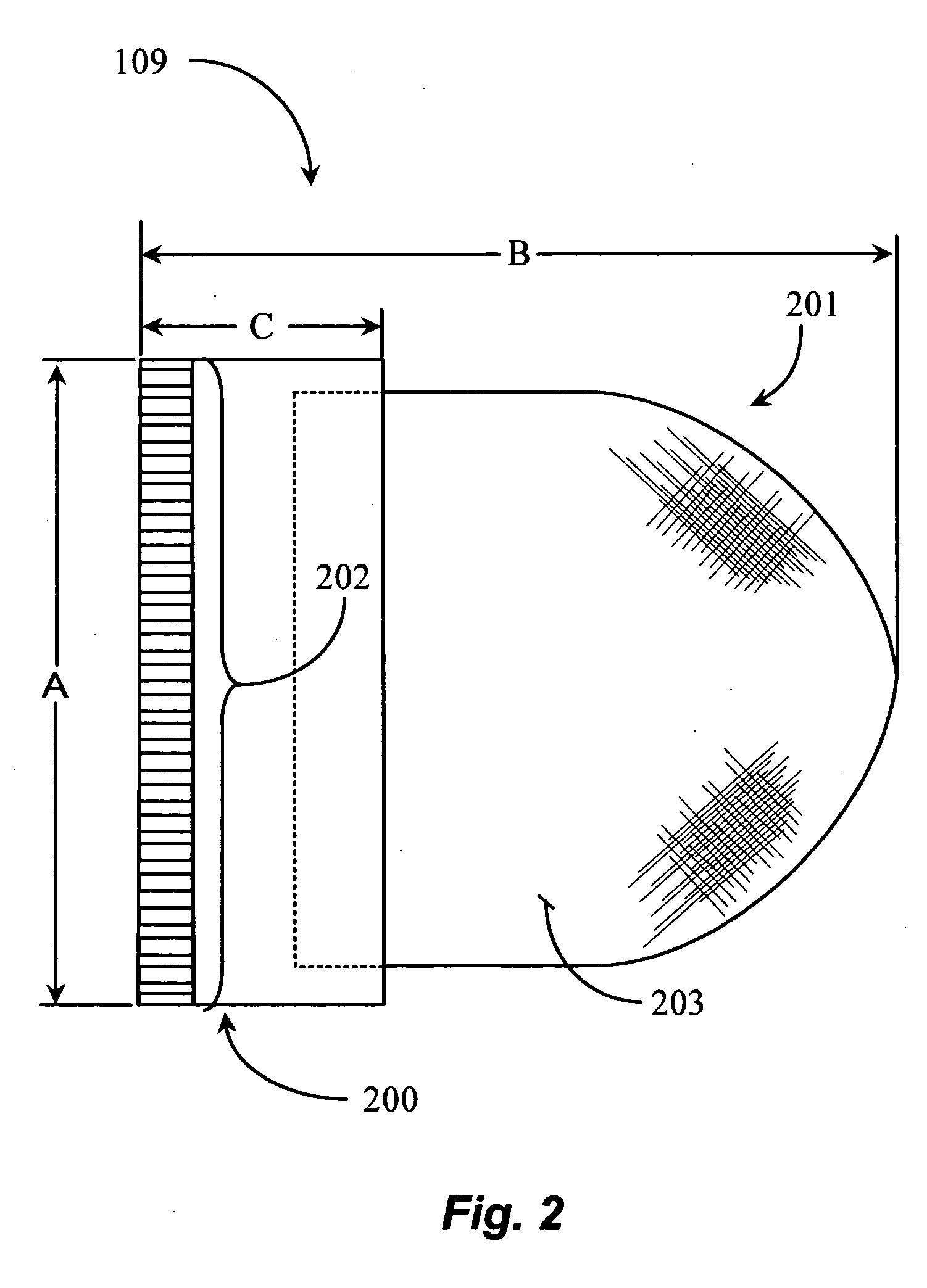Integral lint filter for clothes dryers
a technology for clothes dryers and filters, applied in drying machines, drying chambers/containers, light and heating apparatus, etc., can solve the problems of limiting the placement of exhaust conduits, difficult access, and clogging of extension conduits, etc., and achieve the effect of preventing lint deposits
- Summary
- Abstract
- Description
- Claims
- Application Information
AI Technical Summary
Benefits of technology
Problems solved by technology
Method used
Image
Examples
Embodiment Construction
[0028]FIG. 1A is a side view of a clothes dryer 101 and exhaust system 100 enhanced with an integral lint filter 109 according to an embodiment of the present invention.
[0029]FIG. 1B is a side view of the system of FIG. 1A with an alternate conduit exhaust path.
[0030] Referring now to FIG. 1A, a typical implementation for clothes dryer system 101 is illustrated in this example. The implementation includes clothes dryer system 101 strategically placed next to a building wall 110. This implementation is typical of a washroom or other semi-enclosed building space adapted with the proper outlets plumbing and exhaust portage for accommodating a washer and dryer system. It may be appreciated by one with skill in the art of typical implementations that the space afforded between system 101 and wall 110 to accommodate exhaust assembly 100 is most often very minimal. Therefore, it is an object of the present invention to provide a secondary filtering device that may be easily installed and...
PUM
 Login to View More
Login to View More Abstract
Description
Claims
Application Information
 Login to View More
Login to View More - R&D
- Intellectual Property
- Life Sciences
- Materials
- Tech Scout
- Unparalleled Data Quality
- Higher Quality Content
- 60% Fewer Hallucinations
Browse by: Latest US Patents, China's latest patents, Technical Efficacy Thesaurus, Application Domain, Technology Topic, Popular Technical Reports.
© 2025 PatSnap. All rights reserved.Legal|Privacy policy|Modern Slavery Act Transparency Statement|Sitemap|About US| Contact US: help@patsnap.com



